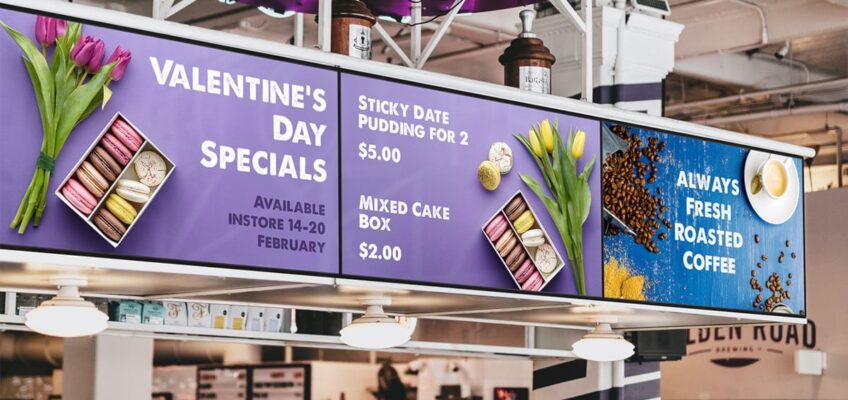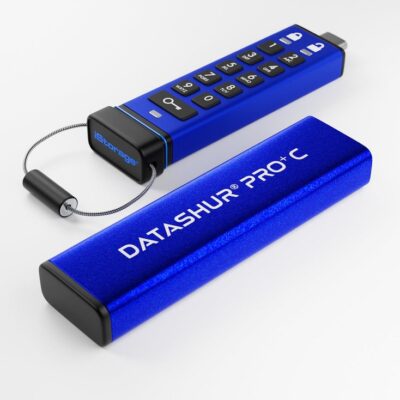Without a doubt, the catering industry has woken up to the potential of digital signage. It is everywhere and is being used in some unusual and innovative ways.
Both independent and franchise bars, cafes, pubs, delis, and restaurants are using digital signage to increase sales while learning more about their customers. Sales of digital signs for restaurants have soared.
Digital menus
For many years now, fast food restaurants have been using digital menus and they haven’t looked back since. Being able to display what is available behind the servers is a great way to tempt customers who are waiting to be served. It also speeds up the serving process because people know before they reach the counter what they want.
These big and bold menu screens can be edited to fit in perfectly with existing branding. Brand colors, fonts, and logos are all easy to incorporate into a digital menu. As the brand evolves the format of the menu can easily be updated and aligned with the retailer’s new look.
Digital menus are also highly practical. When something runs out it can potentially be removed from the menu. This avoids customers being disappointed.
To cut waste and keep prices down
It is also easy to add items to the menu or make a certain dish stand out more from the rest. So, chefs can easily make customers aware of daily specials enabling the sourcing team to take more advantage of low-cost ingredients.
In an average year, US restaurants generate between $22 and $33 billion in food waste. Digital signage can be used to help to reduce the amount that ends up in landfills. Restaurant and café owners can easily edit a digital menu to push the sale of dishes they want to sell through before they spoil. The screens can be seen by everyone in the restaurant. Rather than just those few customers who happen to be sitting close to the sandwich board or chalkboard that these kinds of offers were typically advertised on, in the past.
To advertise special offers and promotions
If it is preferred, special offers and promotions can be advertised separately. Increasingly bar or restaurant owners create their own short slide share style videos or still images. It is a skill that is easily picked up online. Plus, most digital display providers include the use of software and thousands of stunning stock images in their price. Once created, those highly personalized and targeted display advertisements can quickly be deployed onto one or more screens.
Time promotions to have far more of an impact
The fact that digital menus and promotion screens can be changed whenever the bar or restaurant owner wants is proving to be a big plus. For example, a café owner can now focus on breakfast promotions upon opening. Then switch to brunch items mid-morning and lunchtime offers at the time they know people from local businesses are taking their break.
Some caterers are also tweaking their offers in line with the weather. Switching from having a special offer on milkshakes to hot chocolate because it has suddenly got cold and wet to tempt more people through their doors.
A recent study carried out by researchers at Ohio State University shows that the weather has a huge impact on footfall and ordering patterns in restaurants. Typically, heavy rain leads to lower sales in general. But the right offer displayed on a big screen in the window will tempt people on their way home to go in and have a meal.
Market testing
Keeping track of which ad was displayed when and where enables the effectiveness of each one to be measured. The café, bar, or restaurant manager only needs to look at the sales database to see if sales of the product being advertised are picked up.
Improving their understanding of their customers
This analysis enables owners to better understand which type of ads their customers respond to the most. It also helps them to build up a better picture of the personality of their clients, which, in turn, enables them to further tweak their digital screen adverts.
Understanding the type of people who are coming into a café or bar at various times of the day enables owners to tweak the ambience to make the place even more inviting. Perhaps by adjusting the type of music that is played or tweaking the kind of food and drink that is sold during those hours.
To cut marketing costs
Digital screens cost money to deploy. But once the initial investment is made, they are extremely cheap to run. Apart from a small fee to use the software and get remote help with creating the ads and running the system there are no costs. There are no print fees and no need to pay a member of staff to spend hours every month changing promotion banners or updating chalkboard menus.
Many restaurant owners have found that they can take full control of their on-premises marketing. Meaning that they do not have to pay a marketing firm to do the job, which, in many cases, represents a significant saving.
There is no doubt that as digital signage and advertising screens become the norm many more innovative uses will be found for them within the catering industry.









